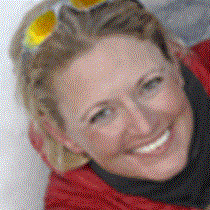Drake Passage
Seven days have passed since we, the guests of National Geographic Explorer, got our first glimpses of Antarctica, the last great wilderness. As the days passed and we explored more of the Antarctic Peninsula, we almost lost the ability to articulate what we were seeing, as being in Antarctica is another world unto itself, and there are very few words which can do it justice.
Antarctica has shown us many of her sides: majestic mountains, howling winds, and incredible wildlife. However, an unexpected one we were able to view onboard Explorer was the underwater world of Antarctica. Onboard the Lindblad vessels there is an undersea specialist who is dedicated to showing the guests what goes on below the oceans surface. We have an underwater camera, a splash camera, and a remotely operated vehicle (ROV) to help us do so. Then in the comfort of the lounge, during evening recap, the edited version is shown.
The biggest question asked about the underwater world of Antarctica is: the water is so cold, how can anything live there? While yes, it is a cold, dark and unforgiving environment, as the water temperature sits between -2°C/28°F and 0°C/32°F, it holds life, colors and diversity that one would not believe until shown in pictures.
The sea floor also holds a lot of history as well. We had some amazing experiences with whales this voyage, in particular a pair of humpback whales at Booth Island. However, it has only been in the last couple of decades that whales have been making a comeback in the Antarctic. At the beginning of the 20th century, with the advent of faster steamships and exploding harpoons, the baleen whales of the Antarctic (blue, fin, minke, and humpback) were hunted nearly to extinction. Shore-based whaling stations were set up on the Antarctic Peninsula and factory ships roamed the surrounding waters.
Pictured here are the remains of a blue whale on the bottom of Port Lockroy, still seeping that prized lipid after nearly 100 years. Also pictured, the unexploded harpoon head, now covered in encrusting algaes, that killed this blue whale. But today, we are seeing more and more whales feeding in waters surrounding the Antarctic Peninsula, which bodes well for the future of these species and the potential sightings by visitors to the Antarctic.
Now, as we cross a very forgiving Drake Passage, our thoughts are just beginning to turn to home, and exactly how we are going to explain what we have seen and done – will our family members be able to grasp the enormity of our voyage and how Antarctica has touched our souls?




